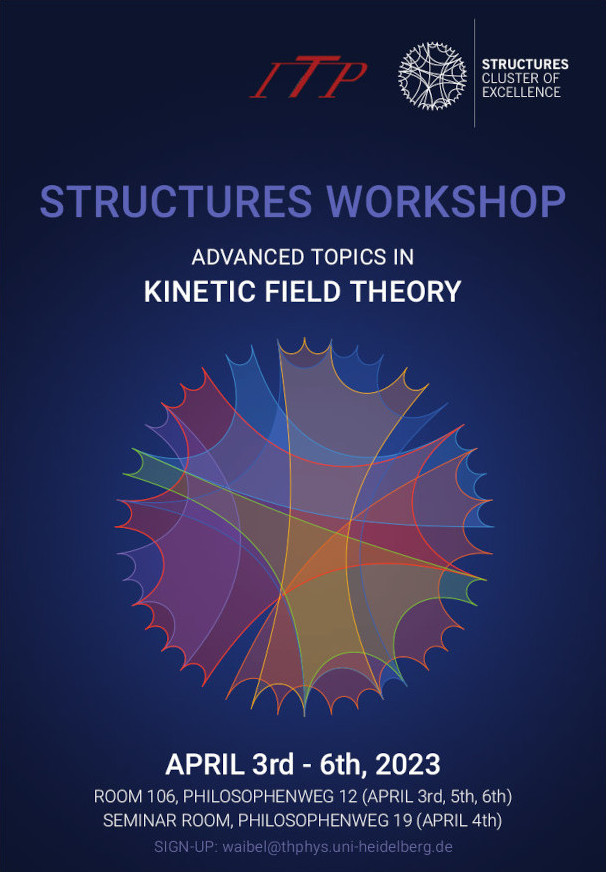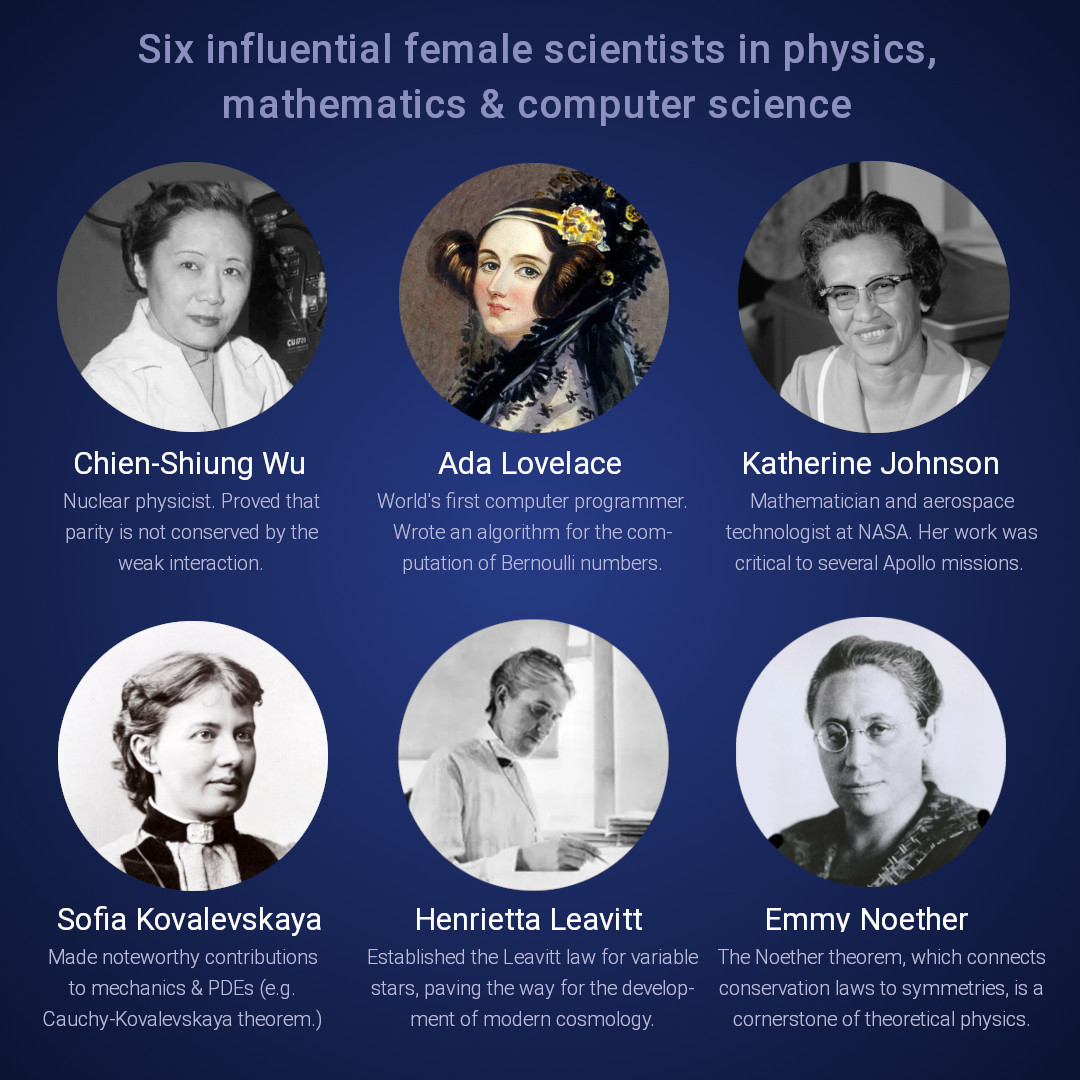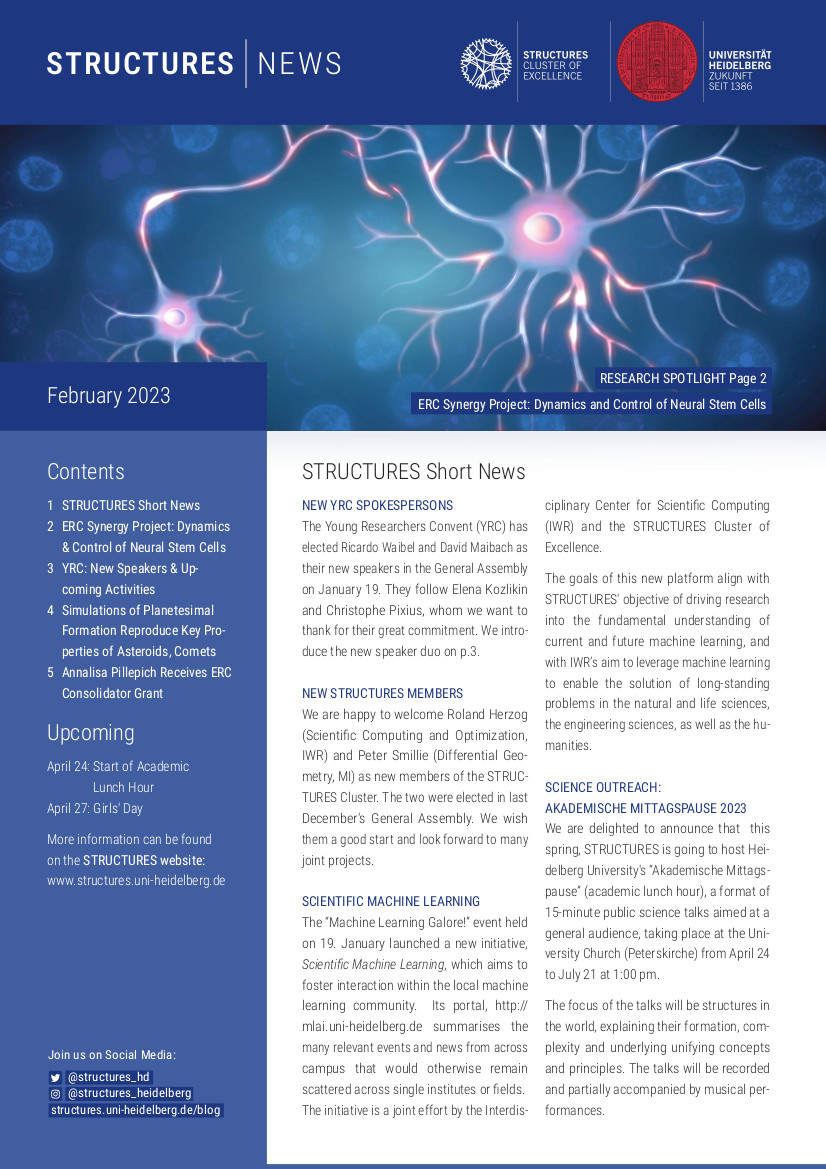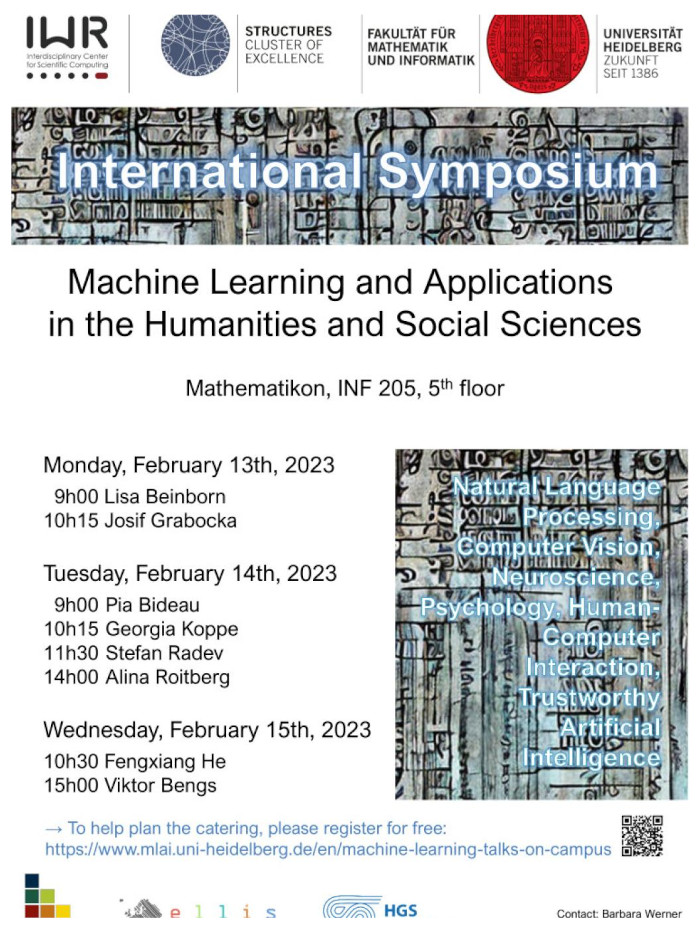Newsroom
Stay informed with our latest news and announcements on this page. For more in-depth content, we also encourage visitors to explore our bimonthly STRUCTURES Newsletter magazine, which features a variety of articles, interviews with members, and background information on our latest research and activities.
We are delighted to announce the workshop Advanced Topics in Kinetic Field Theory (KFT) taking place from the 3rd to the 6th of April at the Philosophenweg, Heidelberg. Kinetic Field Theory (KFT) for cosmic structure formation is a statistical field theory developed by STRUCTURES scientists in Heidelberg. Its description of classical particles (in or out of equilibrium) based on statistical field theory methods has allowed for groundbreaking advances in the study of cosmic structure formation, as well as non-cosmological applications such as planet formation or Rydberg gases. While the workshop itself will have more in-depth discussions about KFT, we want to encourage everyone interested to attend.
Additionally, there will be a general, introductory talk on KFT by Stefan Zentarra on Monday, 3rd of April, 10:00 am, Seminar Room 106, Philosophenweg 12, for everyone who wishes to know more about KFT. If you want to attend the workshop, please respond with a short answer to the email in the poster.
Special Talk by Christian Horvat: Density Estimation on Low-Dimensional Manifolds, March 15
On Wednesday, March 15, 10:30am, Christian Horvat (University of Bern) will give a talk on “Density estimation on low-dimensional manifolds”. Learning from low-dimensional data is a highly relevant topic in STRUCTURES' Comprehensive Project CP6 (“Networks and Machine Learning”), as natural data often exists as high-dimensional data points that can be described by a significantly smaller number of factors. These need to be identified and their distribution learned, which is the topic of Christian Horvat's public lecture on Wednesday.
The talk will be streamed via Teams: Meeting Link.
Six influential female scientists in physics, mathematics & computer science
Today we want to highlight some of the outstanding women who had an incredible impact on the fields of research that now form the basis of STRUCTURES: physics, mathematics and computer science. Dr. Sara Konrad (ITP, member of the Young Researchers Convent) told us that she wished women in science "more opportunities to prove their skills" and our cluster strives to make exactly that possible. To promote diversity and equal opportunities, STRUCTURES spreads awareness and implements various institutional measures accompanied by support programs. Aside from the STEPS programme and family-friendly workplaces, this includes the new STRUCTURES diversity initiative and our outreach activities.
Join us on social media:
Twitter: @structures_hd, Instagram: structures_heidelberg.
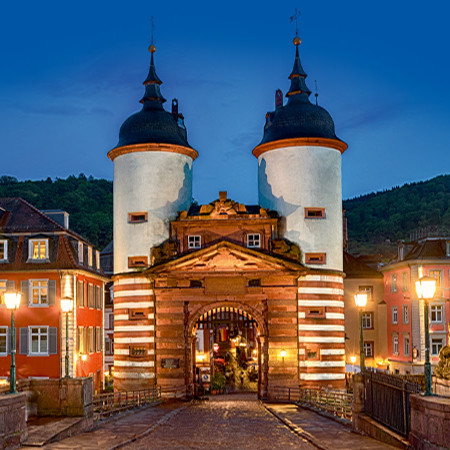 Image credit: BBSFERRARI / GETTY IMAGES / ISTOCK; BEARB.: A. HEINZELMANN
Image credit: BBSFERRARI / GETTY IMAGES / ISTOCK; BEARB.: A. HEINZELMANNWe are happy to announce the 50th Heidelberg Physics Graduate Days, taking place on April 11 - 14, 2023. The courses are organized as parallel block lectures in the morning and afternoon with coffee breaks, and open for advanced students, in particular those working on their Master's and doctoral theses. The aim is to broaden the physics knowledge of our students and to teach specialized techniques. Participants from other universities are welcome!
Two of the lectures will be given by STRUCTURES members: in the morning, Lavinia Heisenberg will present the subject of "Gravitational waves propagation on cosmological backgrounds". In the afternoon, Caroline Heneka will give an introduction on "The 21cm background as a probe of astrophysics and fundamental physics".
The Heidelberg Physics Graduate Days take place at Im Neuenheimer Feld 226 and 227.
We are happy to present the tenth volume of the STRUCTURES Newsletter with the following topics:
- STRUCTURES Short News
- ERC Synergy Project: Dynamics & Control of Neural Stem Cells
- YRC: New Speakers & Upcoming Activities
- Simulations of Planetesimal Formation Reproduce Key Properties of Asteroids, Comets
- Annalisa Pillepich Receives ERC Consolidator Grant
The STRUCTURES Project Management Office is happy to answer questions and to receive feedback.
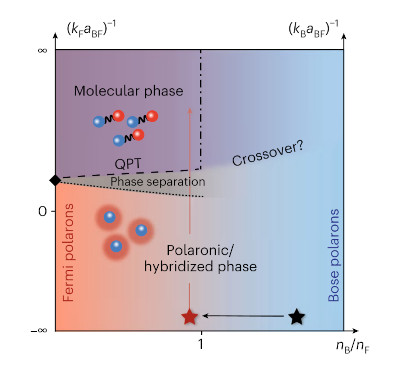 Quantum phase transition illustrated in the phase diagram of degenerate Bose-Fermi mixtures as a function of density ratio and interaction strength. (Reproduced from Fig. 1 of the publication.)
Quantum phase transition illustrated in the phase diagram of degenerate Bose-Fermi mixtures as a function of density ratio and interaction strength. (Reproduced from Fig. 1 of the publication.)STRUCTURES theoretical physicists from the group of Richard Schmidt ( STRUCTURES, Institute for Theoretical Physics) at Heidelberg University together with experimentalists from the Max Planck Institute of Quantum Optics in Garching have made a major breakthrough in the study of atomic Bose-Fermi mixtures. These mixtures are ultracold atomic systems that are composed of both bosonic and fermionic particles and thus enable unique interactions forming new phases of matter. In their study, published in Nature Physics, the research team observed first evidence for a quantum phase transition from a so-called polaronic to a molecular phase in a density-matched degenerate Bose-Fermi mixture.
This transition, which occurs at low temperatures, is induced by interactions depleting the fraction of bosons that occupy the lowest energy state, and by the build-up of strong correlations. Both result in the emergence of a molecular Fermi gas, which has been theoretically modelled within the group of Prof. Schmidt together with Jonas von Milczewski. The features of the underlying quantum phase transition represent a new phenomenon, complementary to the paradigmatic Bose-Einstein condensate/Bardeen–Cooper–Schrieffer crossover observed in Fermi systems. By driving the system through the transition in an experiment by the group of Immanuel Bloch and Xin-Yu Luo in Munich, the researchers have used this novel quantum phase transition to produce a record-large sample of sodium-potassium molecules in their absolute ground state exhibiting a large molecule-frame dipole moment in the quantum-degenerate regime.
Further Information and Links:
- Original Publication in Nature Physics: Duda, M., Chen, XY., Schindewolf, A. et al., Nat. Phys. (2023)
- Research Briefing: Using a quantum phase transition to efficiently produce heteronuclear molecules
- Quantum Matter Theory Group - Richard Schmidt
International Symposium: Machine Learning and Applications in the Humanities and Social Sciences
From Monday, February 13 to Wednesday, February 15, the Interdisciplinary Center for Scientific Computing (IWR) will host the international symposium on “Machine Learning and Applications in the Humanities and Social Sciences” at Mathematikon, INF 205, fifth floor. The aim is to foster interaction and exchange between multiple disciplines, from Natural Language Processing to Neuroscience and Psychology.
Invited speakers are Lisa Beinborn, Josif Grabocka, Pia Bideau, Georgia Koppe, Stefan Radev, Alina Roitberg, Fengxiang He and Viktor Bengs. To help plan the catering, please register for free at the MLAI portal:
